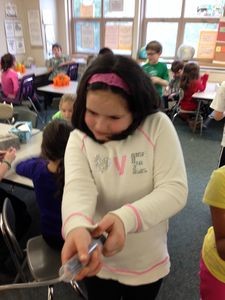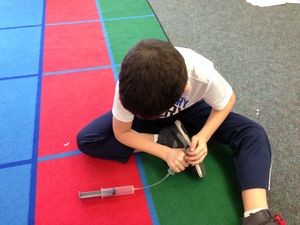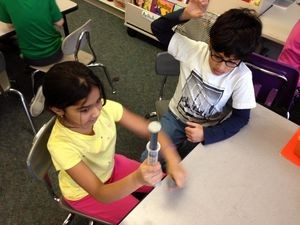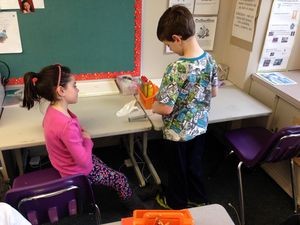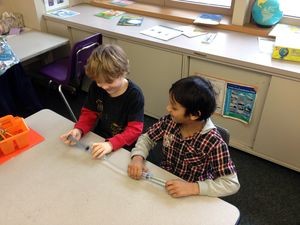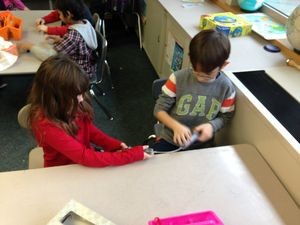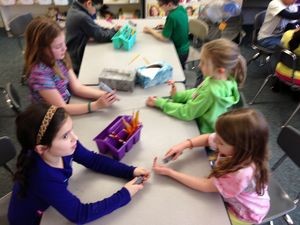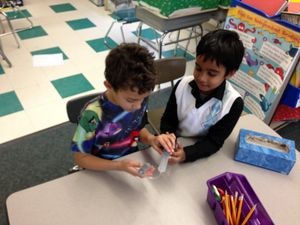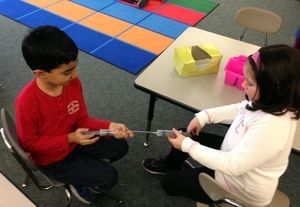Posted by kavery508 | Posted in Uncategorized | Posted on February 29, 2016
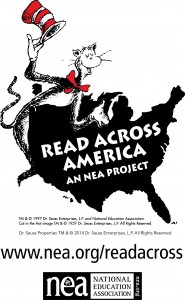 It’s Read Across America Week! This nationwide effort is sponsored by the National Education Association with the aim of drawing attention to the importance and joy of lifelong reading. That’s an everyday goal of our classroom! The event is always paired with books by Dr. Seuss (yet another famous author from Massachusetts), which we will share this week. On Friday we will be honored by a community member who will come in to read to us and share the importance of reading in our everyday lives. Our week will conclude with our class participating in our own Reader’s Theatre performance of The Sneetches (see video below) and a grade-wide celebration of reading at our monthly Grade 1 & 2 School Meeting. You can learn more about the day, including science and math activities that can be done at home, at http://www.nea.org/grants/886.htm.
It’s Read Across America Week! This nationwide effort is sponsored by the National Education Association with the aim of drawing attention to the importance and joy of lifelong reading. That’s an everyday goal of our classroom! The event is always paired with books by Dr. Seuss (yet another famous author from Massachusetts), which we will share this week. On Friday we will be honored by a community member who will come in to read to us and share the importance of reading in our everyday lives. Our week will conclude with our class participating in our own Reader’s Theatre performance of The Sneetches (see video below) and a grade-wide celebration of reading at our monthly Grade 1 & 2 School Meeting. You can learn more about the day, including science and math activities that can be done at home, at http://www.nea.org/grants/886.htm.

What great writers these kids are! Using headings to organize the body of their pieces, they have learned to write explanatory sentences with details. Here are some examples from: 1) Martin on “Cats-Body Parts:” 1) Cats have sharp claws that can go in when it is running, and out when it is hunting. A cat’s tongue is actually not smooth, it is bristly. A cat’s ears and eyes are very unique. The ears are very sensitive and the eyes have lots of rods in them. 2) Aamir on “Black Jaguars-Blending into Your Background:” Black jaguars unlike other jaguars need only one thing to help it blend: shadows. Since black jaguars are already dark colored, they will be almost invisible against the darkness of shadows. 3) Alexandra on “Gymnastics-What is the Equipment?”: There are lots and lots of equipment at GLC and I’m going to point out some of the main ones. There are bars and balance beams. There are even ropes to climb on. Super!
 This week’s math focuses on relating difference to subtraction, and learning mental math strategies to subtract. Since subtraction is the inverse operation of addition, we make a connection to last week’s strategies. To find the difference when only the ones place changes, we simply subtract and don’t mess with the tens and hundreds: 267 -5 is the same as 7 -5–just remember to put back the 260. To subtract in your head when only the tens place changes, just count back by tens: 267 – 50 should sound like 257, 247, 237, 227, 217. And the same applies when only the 100s place changes: 267 – 100 = 167.
This week’s math focuses on relating difference to subtraction, and learning mental math strategies to subtract. Since subtraction is the inverse operation of addition, we make a connection to last week’s strategies. To find the difference when only the ones place changes, we simply subtract and don’t mess with the tens and hundreds: 267 -5 is the same as 7 -5–just remember to put back the 260. To subtract in your head when only the tens place changes, just count back by tens: 267 – 50 should sound like 257, 247, 237, 227, 217. And the same applies when only the 100s place changes: 267 – 100 = 167.
To quickly subtract 7, 8, or 9 in our heads, we can subtract 10 instead and count up 3, 2, or 1. For example: 432 – 7 is the same as 432 – 10 (422) + 3 (425) since -10 +3 = 7. And 432 – 8 is the same as 432 – 10 (422) + 2 (424), and 432 – 9 is the same as 432 – 10 + 1. These tricks can really work, and show a real fluency with numbers. It is important, therefore, that students try them out repeatedly if they are ever to own them or use them when it suits them to do so.
 In Social Studies, our study of geography continues with an examination of countries and continents. What exactly does each of these mean? How are continents and countries made? Which maps are best for learning about and locating these different places? National Geographic Online is a fantastic stop for all things geographical, including the photos for which they are famous as well as games and articles for kids: http://www.nationalgeographic.com/kids-world-atlas/maps.html
In Social Studies, our study of geography continues with an examination of countries and continents. What exactly does each of these mean? How are continents and countries made? Which maps are best for learning about and locating these different places? National Geographic Online is a fantastic stop for all things geographical, including the photos for which they are famous as well as games and articles for kids: http://www.nationalgeographic.com/kids-world-atlas/maps.html

What an amazing job students have done in science! After collecting temperature data from the past month that is valid and reliable, they organized it in tables and created bar graphs (try it yourself with any data you like–it’s really cool! http://nces.ed.gov/nceskids/createagraph/). This week they will analyze the data to look for trends and anomalies; aggregate the data to answer specific questions; and draw conclusions about temperature in winter, 2016. Smart! Here are some pictures of them sharing their observations with fellow scientists and creating graphs online, along with some more great 100 Day projects:


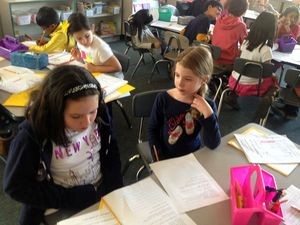
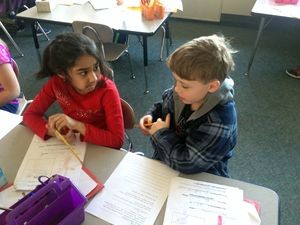
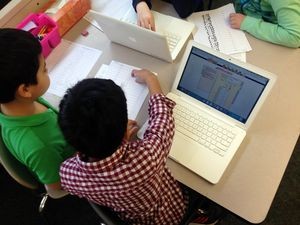
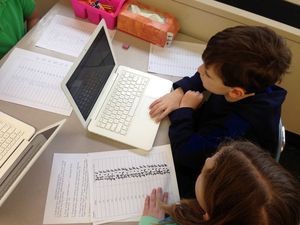
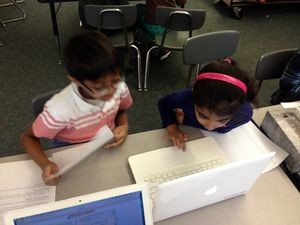
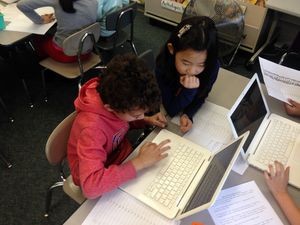
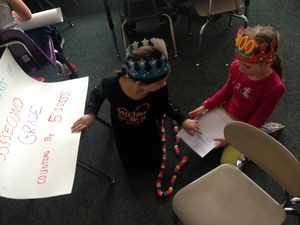

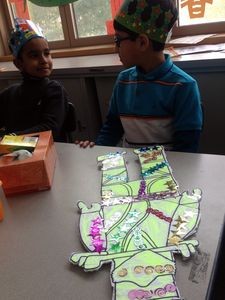
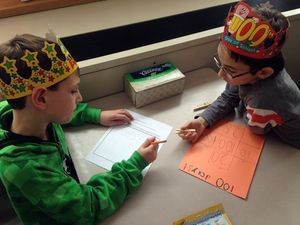

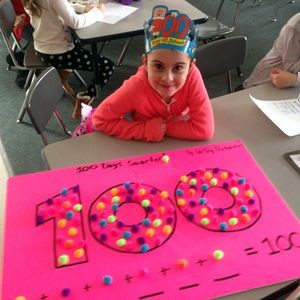
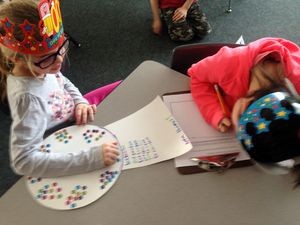
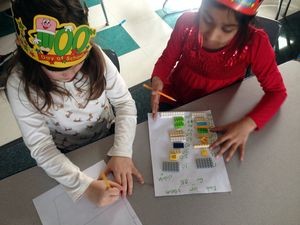
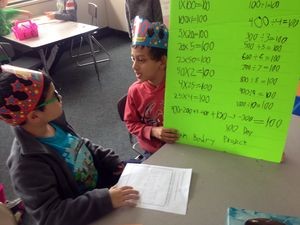
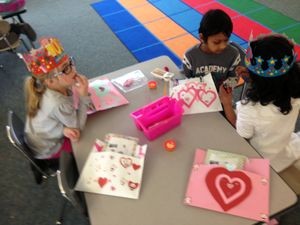
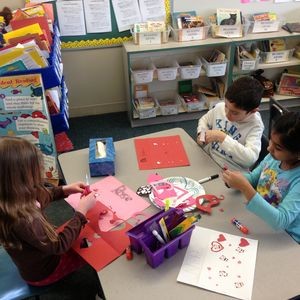
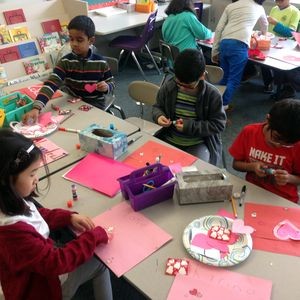
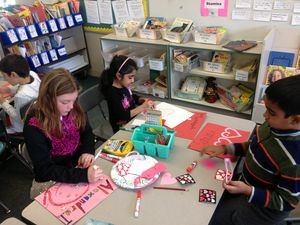
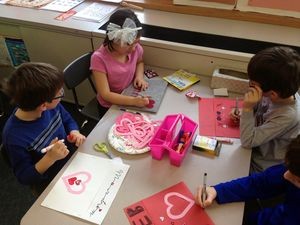

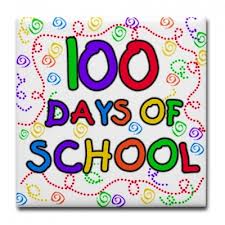 It’s almost here! This Friday marks the 100th Day of School. Students are encouraged to make and bring in projects that show math and/or patterning involving the magic number 100. They can bring them any day and we’ll add them to our 100 Museum. Projects will be showcased and used on 100 Day as students analyze each other’s good work. For ideas: scroll down to last week’s blog post; check out Pinterest or Google; and click
It’s almost here! This Friday marks the 100th Day of School. Students are encouraged to make and bring in projects that show math and/or patterning involving the magic number 100. They can bring them any day and we’ll add them to our 100 Museum. Projects will be showcased and used on 100 Day as students analyze each other’s good work. For ideas: scroll down to last week’s blog post; check out Pinterest or Google; and click  Valentines will be exchanged on Friday. For a reminder of guidelines, please scroll down to last week’s blog post.
Valentines will be exchanged on Friday. For a reminder of guidelines, please scroll down to last week’s blog post.
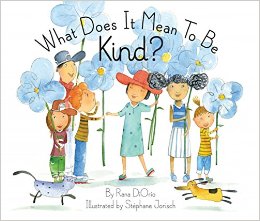

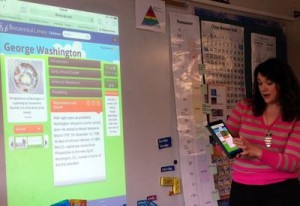
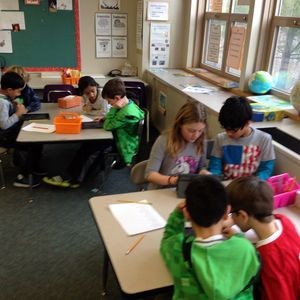
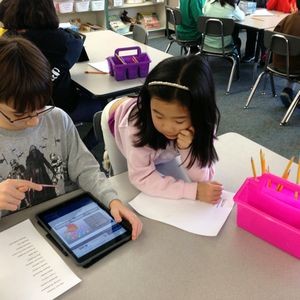
 The kids have made great strides in their opinion writing work, showing they understand the purpose of writing an introduction, opinion, and justifying their reasons with examples. Consider the word choice and explanations in these excerpts from 1) Aamir and 2) Rose: 1) In my opinion, Eid is the best holiday. One reason is…it is exciting! Stores are bustling with people to buy food for the holiday. 2) In my opinion, cats make much better pets than dogs. For example, cats are very loving. They can say “We are family” by rubbing their head against you. Our last challenge this term will be to write opinions using evidence from text as part of the research project above!
The kids have made great strides in their opinion writing work, showing they understand the purpose of writing an introduction, opinion, and justifying their reasons with examples. Consider the word choice and explanations in these excerpts from 1) Aamir and 2) Rose: 1) In my opinion, Eid is the best holiday. One reason is…it is exciting! Stores are bustling with people to buy food for the holiday. 2) In my opinion, cats make much better pets than dogs. For example, cats are very loving. They can say “We are family” by rubbing their head against you. Our last challenge this term will be to write opinions using evidence from text as part of the research project above!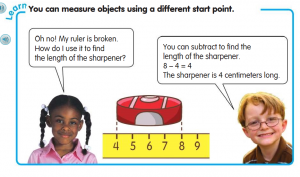
 Our weather study continues with a look at what air pressure is and how we can use it to predict weather locally and nationally. I’ve been using surface maps and temperature maps daily with the kids from The Weather Channel at
Our weather study continues with a look at what air pressure is and how we can use it to predict weather locally and nationally. I’ve been using surface maps and temperature maps daily with the kids from The Weather Channel at 
